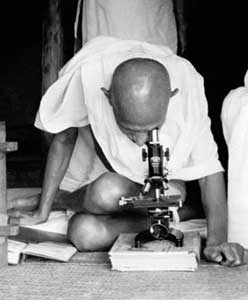The Veterans Administration: the Linux of medical records

I just spent three weeks in our local Veterans Administration system. Mention "VA" to any group of doctors and you are sure to hear funny stories; a great many doctors have at least some of their medical training within VA hospitals, and those hospitals are full of characters among both their staff and their patients.
VA hospitals have various frustrating aspects you'd expect from a large federal bureaucracy. But they also share a common sense of purpose and community unusual in other hospitals. Because of their commitment to a particular group, they feel almost like massive community health centers, in which there is a sense of shared purpose built not on organizational advancement but on the welfare of the community which the organization serves. It's this part of the VA which makes it a great system.
Along the way, the VA has accomplished various things that other healthcare systems haven't. One possibly more broadly transformative innovation is VistA--the Veteran's Administration electronic health record software, now available as open source software for any organization that wants to use it. Revisiting VistA this last three weeks, I can testify: VistA really is the bomb-diggity.
I say this as someone who works in a hospital that regularly wins prizes and high rankings for its own electronic medical records and ordering systems. Our electronic medical record is easy to use and intuitive, the design has an Edward Tufte-style simplicity (though sadly without sparklines), and is full of useful features. I regularly use it as a selling point for medical students considering our hospital for residency. Having used various electronic medical records during my time as a medical student and in external rotations as a resident, I'd put our system against anyone's.
The VA's system is uglier-looking and harder to learn how to use. But even in three short weeks as a novice user, I found it quite powerful, especially when it allowed me to access veterans' health records scattered across various VA hospitals around the country. At the end of the day, any data storage system can only be as useful as the data it stores; when so many VA hospitals are linked, the software is more powerful partly because of the information it provides. And when I got past some of the difficulty in getting used to the program, some of the way it integrates information is actually more useful than the record system I use.
Most importantly, it is available as open-source software, which any medical organization anywhere can use. Its ordering system, once learned, is easily integrated into the rest of the record. I also liked its graphing features which allowed visual displays of prescriptions and lab values charted over time; many electronic medical records have this kind of feature, but somehow the VA's system works better than most to provide sensible x- and y-axes for the data which is being presented. Uploading radiologic images takes longer than I would have liked but this is likely a fixable problem.
The stimulus package of last year included a big bunch of money to support dissemination of electronic medical records. Spreading open-source VistA will likely be one of the cheapest ways to accomplish this. If I were a large healthcare system, I'd take this system and maybe put some extra money into building a more intuitive and lovely-looking graphical interface on top of it (the one in use at the VA is from 1997)--but I'd keep VistA.





2 comments:
I just wanted to add some warm praise for the care given by the VA.
My father-in-law, a World War II veteran, suffers from advanced Parkinson's disease. After he moved to California, his wife and daughter arranged for him to have a concierge doctor (an expense of about $6,000/year), assuming his needs would be too draining for an average overwhelmed primary care doc in Northern California to respond to. As his needs grew, he and his wife turned to the VA, first for help with home care, and then for his primary care, when his concierge doctor had given too many signals that he was taking too much of his time.
At the VA, his care is well-coordinated and thorough. He sees great doctors who communicate well with each other. He is referred to every available, appropriate community resource.
There's a small but consistent thing they do, too: Whenever he has his blood drawn, or his vital signs taken, my ever-polite father-in-law says, "Thank you." The staff always respond, "Thank you for your service."
I've noticed the "Thank you for your service" thing too. CT scan techs will say that to their patients as they're being wheeled out of the CT scanner. It happens all over the system. It's a nice thing; there's something very sincere about the VA which I appreciate.
And I'm glad they're beating out that concierge doctor for your father-in-law's care! I hope more people will come to appreciate what the VA is able to do.
Post a Comment